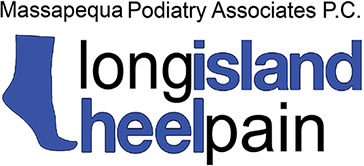Winter can mean significantly more time spent with your feet encased in boots than usual—and if they’re not in boots, they may be in dress shoes instead.
There isn’t really anything wrong with that, of course. It’s normal for the weather and holiday parties, after all. But if your feet are spending more time in tighter confines, the risk of an ingrown toenail can rise.
Whenever an ingrown toenail does strike, it’s best to take care of it as soon as possible. Who wants to spend any more time with bothersome pain than they need to?
Fortunately, most cases of an ingrown toenail are mild and can be effectively treated at home. We will be running through a standard method for doing so, but first let’s review an important question.

When Should an Ingrown Toenail Be Seen by a Professional?
While most ingrown toenails are easy to handle, there are always exceptions to the rule. Not every case is best treated at home, and sometimes the help of a podiatrist is preferable or even necessary for the best outcomes.
Here are some situations when you should really consider calling us about your ingrown toenail:
- It hurts too much to touch. If the pain is too much for you to perform home treatment, please do not hesitate to reach out to us. We have access to effective ways of relieving pain, and it also might be a symptom of a complication that will need to be addressed.
- Your toe is showing signs of infection. An infected ingrown toenail can lead to worse problems, so it is important that any suspected infection is looked at promptly. Severe pain can be one sign of infection, and others include red streaks radiating from the site of the problem, a tangible heat in the area, and a heavy discharge of pus.
- You have diabetes. Infections can be an enormous concern to patients who have diabetes, due to the consequences the disease can have on the feet. Informing us of problems such as ingrown toenails—no matter how minor they may be—can help us track potential problems and stop worse things from happening.
- Your ingrown toenails keep coming back. An ingrown toenail once in a great while can just be bad luck, but ingrown nails that just keep coming back are a sign that something needs to be taken care of. We can help you get to the root of the problem.
If any of the situations above apply to you—or you simply have questions or concerns—we are here and happy to help you.
Otherwise, you could try managing your ingrown toenail on your own.
Treating an Ingrown Toenail at Home
First thing’s first:
Any form of “treatment” you might be thinking of that includes cutting into your skin, digging into it with some sort of implement, or cutting notches into your nail, just throw it out the window right now.
These forms of treatment either don’t work or risk you messing up your toe further. A safe ingrown toenail treatment takes a bit of patience and a gentler approach—not anything along the line of “bathroom surgery.”
We recommend following these steps for treating an ingrown toenail in the comfort of your home:
- Start by soaking your feet in warm water for 15-20 minutes. This helps reduce the swelling and tenderness, making your foot more comfortable and helping with further steps. You can soak your feet 3-4 times per day.
- After a soak, gently dry your foot. Then, place a clean piece of waxed dental floss or a small piece of cotton beneath the ingrown edge. This helps keep the nail elevated and prevent further growth inward. Floss tends to be preferred, as pieces of cotton can sometimes get stuck beneath the nail.
- Apply some antibiotic cream for protection, then apply a bandage around the toe.
Every time you soak your foot, replace the current cotton/floss and bandage with a new, fresh supply. If you are using cotton, make sure all pieces are removed from beneath the nail.
While recovering from an ingrown toenail, try to keep your foot from being confined in your shoes as often as possible. If you can manage open-toed shoes or sandals, opt for them (although we know that isn’t always a sensible option in our climate).
Standard, over-the-counter pain relievers such as acetaminophen, ibuprofen, and naproxen sodium may also be taken to help relieve pain, but only if necessary and you have never been advised not to take them by a doctor. Follow provided dosage directions.
Help for Preventing Future Ingrown Toenails
Taking care of an ingrown toenail is nice. Not having another one in the future is even better!
Certain factors can increase risks for ingrown toenails. But mitigating them can help lower your chances of getting one.
- Don’t wear tight shoes. Shoes that force pressure against the front of the foot or cram the toes together can force an ingrown toenail.
- Cut nails properly. Trim as straight across the nail as possible, avoiding curving at the edges. You can always use a file to gently round off corners if you need to.
- Keep your toes from trauma. When toenails are damaged—such as from having something dropped on them or repetitive impact against the inside of your shoe while running—they can start growing incorrectly.
If you take steps to try to prevent your ingrown toenails, but they just keep coming back over and over, you may have inherited the penchant for your nails to grow curved. In these cases, we might recommend permanent removal of part or all of the nail, a simple procedure that can be performed in-office.
If ingrown toenails are causing you more trouble than can be handled at home, give our Massapequa office a call at (516) 541-9000. You may also fill out our online contact form, if you prefer, and a member of our staff will reach out to you during normal office hours.

